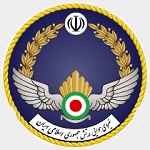Hobby Master HA19072 Islamic Republic of Iran Air Force McDonnell RF-4E Phantom II Fighter-Bomber - 72-0267/2-434, Hamadan Air Base, Hamadan Province, Iran, 1970s (1:72 Scale)
"Skyhigh Is My Place"
- Motto of the Islamic Republic of Iran Air Force
 The McDonnell Douglas F-4 Phantom II is a two-seat, twin-engined, all-weather, long-range supersonic fighter-bomber originally developed for the U.S. Navy by McDonnell Aircraft. Proving highly adaptable, it became a major part of the air wings of the U.S. Navy, Marine Corps, and U.S. Air Force. It was used extensively by all three of these services during the Vietnam War, serving as the principal air superiority fighter for both the Navy and Air Force, as well as being important in the ground-attack and reconnaissance roles by the close of U.S. involvement in the war.
The McDonnell Douglas F-4 Phantom II is a two-seat, twin-engined, all-weather, long-range supersonic fighter-bomber originally developed for the U.S. Navy by McDonnell Aircraft. Proving highly adaptable, it became a major part of the air wings of the U.S. Navy, Marine Corps, and U.S. Air Force. It was used extensively by all three of these services during the Vietnam War, serving as the principal air superiority fighter for both the Navy and Air Force, as well as being important in the ground-attack and reconnaissance roles by the close of U.S. involvement in the war.
First entering service in 1960, the Phantom continued to form a major part of U.S. military air power throughout the 1970s and 1980s, being gradually replaced by more modern aircraft such as the F-15 Eagle and F-16 Fighting Falcon in the U.S. Air Force and the F-14 Tomcat and F/A-18 Hornet in the U.S. Navy. It remained in service in the reconnaissance and Wild Weasel roles in the 1991 Gulf War, finally leaving service in 1996. The Phantom was also operated by the armed forces of 11 other nations. Israeli Phantoms saw extensive combat in several Arab - Israeli conflicts, while Iran used its large fleet of Phantoms in the Iran - Iraq War. Phantoms remain in front line service with seven countries, and in use as an unmanned target in the U.S. Air Force.
Phantom production ran from 1958 to 1981, with a total of 5,195 built. This extensive run makes it the second most-produced Western jet fighter, behind the famous F-86 Sabre at just under 10,000 examples.
The F-4 Phantom was designed as a fleet defense fighter for the U.S. Navy, and first entered service in 1960. By 1963, it had been adopted by the U.S. Air Force for the fighter-bomber role. When production ended in 1981, 5,195 Phantom IIs had been built, making it the most numerous American supersonic military aircraft. Until the advent of the F-15 Eagle, the F-4 also held a record for the longest continuous production for a fighter with a run of 24 years. Innovations in the F-4 included an advanced pulse-doppler radar and extensive use of titanium in its airframe.
The RF-4 was an unarmed photographic reconnaissance version of the USAF's F-4C which carried a variety of film-based and side-looking radar [SLAR] sensors for the Air Force [RF-4C] and the Marine Corps [RF-4B].
In February 1963, the Marine Corps agreed to acquire the first 9 of what would eventually amount to a fleet of 46 RF-4Bs, a photographic reconnaissance version of the basic F-4 Phantom. The RF-4B was generally similar to the more numerous Air Force RF-4C, with a lengthened nose designed for reconnaissance applications. Three separate camera bays in the nose were designated Stations 1, 2, and 3, and carried a variety of cameras, which unlike the cameras of the RF-4Cs were on rotating mounts so they could be aimed at targets off the flight path.
Pictured here is a 1:72 scale replica of an Islamic Republic of Iran Air Force McDonnell RF-4E Phantom II fighter-bomber.
Pre-order! Ship Date: May 2025.
Dimensions:
Wingspan: 6-1/4-inches
Length: 10-1/2-inches
Release Date: ?
 Historical Account: "R and R" - The Islamic Republic of Iran Air Force (IRIAF) is currently the largest operator of McDonnell Douglas F-4D/E Phantom II all-weather fighter jets. In total, 58 examples are still in service with five squadrons at four air bases across Iran, with 60% of them being airworthy. The air force's Mehrabad Aircraft Overhaul Complex in Tehran plays a key role in keeping the fleet operational by repairing and restoring its Phantom IIs which have incurred structural and severe air frame damage in accidents and incidents.
Historical Account: "R and R" - The Islamic Republic of Iran Air Force (IRIAF) is currently the largest operator of McDonnell Douglas F-4D/E Phantom II all-weather fighter jets. In total, 58 examples are still in service with five squadrons at four air bases across Iran, with 60% of them being airworthy. The air force's Mehrabad Aircraft Overhaul Complex in Tehran plays a key role in keeping the fleet operational by repairing and restoring its Phantom IIs which have incurred structural and severe air frame damage in accidents and incidents.
Traditionally, the task of performing depot maintenance or overhaul, including heavy structural repairs, of F-4D/Es as well as RF-4E tactical reconnaissance aircraft has been the responsibility of Iranian Aircraft Industries Corporation (IACI) located in the northwest of the Mehrabad International Airport since 1971. During the Iran-Iraq war, the IACI overhaul center repaired several severely damaged F-4Es, starting with 3-6618, which was cut in half by a bomb dropped by Iraqi Air Force Tu-22B bombers on IACI's ramp on the morning of September 22nd, 1980.
In the mid-1980s when a number of battle-damaged F-4D/Es reached the maximum capacity at IACI, the F-4 maintenance center at the IRIAF's 1st Tactical Fighter Base (TFB), which since 1971 had performed organizational repairs (phase intervals), was tasked to perform heavy repair of battle-damaged Phantom IIs. Its technicians were transferred to 9th TFB in Bandar Abbas, south of Iran where they started the repairs for the first time in 1983. The first aircraft was 3-6535 which had a belly landing in the desert due to fuel starvation on September 23rd, 1980.
During the Iran-Iraq war, the Owj Industrial Complex was established in IRIAF, tasked with reverse engineering and manufacturing fuselage and structural parts for fighter jets, including Phantom IIs. The complex manufactured hundreds of parts which could not be sourced from overseas due to sanctions enabling both the 1st TFB and then IACI to repair some of the badly damaged Phantom IIs.
In the 1990s, the overhaul center restored an RF-4E Phantom II, 3-6501, which had a hard landing on the 29L runway of Mehrabad International Airport in 1976. With the successful work on the restoration of the aircraft, IRIAF's commander-in-chief, Brigadier General Mansour Sattari, ordered recertification of the F-4 overhaul center to resume restoration of heavily damaged F-4s from 1993. The center later took over the complete responsibility of performing heavy structural repairs of F-4s. Since 2002, the center has also overhauled F-4D/Es in addition to structural repairs of damaged aircraft.







![US M16 Multiple Gun Motor Carriage with Four M2 Browning .50 caliber Machine Guns - Unidentified Unit, Normandy, 1944 [D-Day Commemorative Packaging] (1:32 Scale)](http://cdn4.volusion.store/qh9e9-jdqv9/v/vspfiles/photos/UNI81303-1.jpg?v-cache=1740197136)
![US Army Dodge WC54 Ambulance - 316th Medical Battalion, 91st Infantry Division, Normandy, France, 1944 [D-Day Commemorative Packaging] (1:32 Scale)](http://cdn4.volusion.store/qh9e9-jdqv9/v/vspfiles/photos/UNI80062-1.jpg?v-cache=1740197136)
